Association of Histological and Clinical Chorioamnionitis With Neonatal Sepsis Among Preterm Infants: A Systematic Review, Meta-Analysis, and Meta-Regression
- PMID: 32582153
- PMCID: PMC7289970
- DOI: 10.3389/fimmu.2020.00972
Association of Histological and Clinical Chorioamnionitis With Neonatal Sepsis Among Preterm Infants: A Systematic Review, Meta-Analysis, and Meta-Regression
Abstract
Chorioamnionitis (CA) is considered a key risk factor for very preterm birth and for developing early onset sepsis (EOS) in preterm infants, but recent data suggest that CA might be protective against late onset sepsis (LOS). We performed a systematic review and meta-analysis of studies exploring the association between CA and sepsis. A comprehensive literature search was performed in PubMed/MEDLINE and EMBASE, from their inception to December 1, 2018. A random-effects model was used to calculate odds ratios (OR) and 95% confidence intervals (CI). Sources of heterogeneity were analyzed by subgroup and meta-regression analyses. The following categories of sepsis were analyzed: EOS, LOS, unspecified onset sepsis (UOS), culture-proven, and clinical sepsis. CA was subdivided into clinical and histological chorioamnionitis. Funisitis was also analyzed. We found 3,768 potentially relevant studies, of which 107 met the inclusion criteria (387,321 infants; 44,414 cases of CA). Meta-analysis showed an association between any CA and any EOS (OR 4.29, CI 3.63-5.06), any LOS (OR 1.29, CI 1.11-1.54), and any UOS (OR 1.59, CI 1.11-1.54). Subgroup analysis showed that CA was associated with culture-proven EOS (OR 4.69, CI 3.91-5.56), clinical EOS (OR 3.58, CI 1.90-6.76), and culture-proven LOS (OR 1.31, CI 1.12-1.53), but not with clinical LOS (OR 1.52, CI 0.78-2.96). The presence of funisitis did not increase the risk of either EOS or LOS when compared with CA without funisitis. CA-exposed infants had lower gestational age (-1.11 weeks, CI -1.37 to -0.84) than the infants not exposed to CA. Meta-regression analysis showed that the lower gestational age of the CA group correlated with the association between CA and LOS but not with the association between CA and EOS. In conclusion, our data suggest that the positive association between chorioamnionitis and LOS may be modulated by the effect of chorioamnionitis on gestational age.
Keywords: chorioamnionitis; extremely preterm birth; immunomodulation; meta-analysis; meta-regression; neonatal sepsis; systematic review; very preterm birth.
Copyright © 2020 Villamor-Martinez, Lubach, Rahim, Degraeuwe, Zimmermann, Kramer and Villamor.
Figures
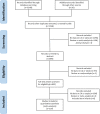
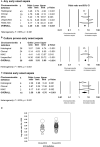
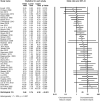

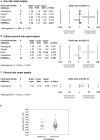

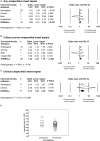

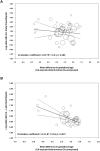
Similar articles
-
Association of Chorioamnionitis With Bronchopulmonary Dysplasia Among Preterm Infants: A Systematic Review, Meta-analysis, and Metaregression.JAMA Netw Open. 2019 Nov 1;2(11):e1914611. doi: 10.1001/jamanetworkopen.2019.14611. JAMA Netw Open. 2019. PMID: 31693123 Free PMC article.
-
Chorioamnionitis and Risk for Maternal and Neonatal Sepsis: A Systematic Review and Meta-analysis.Obstet Gynecol. 2021 Jun 1;137(6):1007-1022. doi: 10.1097/AOG.0000000000004377. Obstet Gynecol. 2021. PMID: 33957655 Free PMC article.
-
Neonatal Sepsis of Early Onset, and Hospital-Acquired and Community-Acquired Late Onset: A Prospective Population-Based Cohort Study.J Pediatr. 2018 Oct;201:106-114.e4. doi: 10.1016/j.jpeds.2018.05.048. Epub 2018 Jul 24. J Pediatr. 2018. PMID: 30054165
-
Clinical chorioamnionitis and histologic placental inflammation: association with early-neonatal sepsis.J Matern Fetal Neonatal Med. 2022 Dec;35(25):8090-8096. doi: 10.1080/14767058.2021.1961727. Epub 2021 Oct 10. J Matern Fetal Neonatal Med. 2022. PMID: 34632923
-
Presepsin for the Diagnosis of Neonatal Early-Onset Sepsis: A Systematic Review and Meta-analysis.JAMA Pediatr. 2022 Aug 1;176(8):750-758. doi: 10.1001/jamapediatrics.2022.1647. JAMA Pediatr. 2022. PMID: 35639395 Free PMC article.
Cited by
-
Association of Funisitis with Short-Term Outcomes of Prematurity: A Frequentist and Bayesian Meta-Analysis.Antioxidants (Basel). 2023 Feb 20;12(2):534. doi: 10.3390/antiox12020534. Antioxidants (Basel). 2023. PMID: 36830092 Free PMC article. Review.
-
[Influence of premature rupture of membranes on the early prognosis of extremely premature infants].Zhongguo Dang Dai Er Ke Za Zhi. 2021 Jan;23(1):25-30. doi: 10.7499/j.issn.1008-8830.2009141. Zhongguo Dang Dai Er Ke Za Zhi. 2021. PMID: 33476533 Free PMC article. Chinese.
-
Does perinatal management have the potential to reduce the risk of intraventricular hemorrhage in preterm infants?Front Pediatr. 2024 Jan 31;12:1361074. doi: 10.3389/fped.2024.1361074. eCollection 2024. Front Pediatr. 2024. PMID: 38357510 Free PMC article.
-
Clinical chorioamnionitis: where do we stand now?Front Med (Lausanne). 2023 May 24;10:1191254. doi: 10.3389/fmed.2023.1191254. eCollection 2023. Front Med (Lausanne). 2023. PMID: 37293298 Free PMC article. Review.
-
Updates in Late-Onset Sepsis: Risk Assessment, Therapy, and Outcomes.Neoreviews. 2022 Nov 1;23(11):738-755. doi: 10.1542/neo.23-10-e738. Neoreviews. 2022. PMID: 36316254 Free PMC article. Review.
References
-
- Park CW, Moon KC, Park JS, Jun JK, Romero R, Yoon BH. The involvement of human amnion in histologic chorioamnionitis is an indicator that a fetal and an intra-amniotic inflammatory response is more likely and severe: clinical implications. Placenta. (2009) 30:56–61. 10.1016/j.placenta.2008.09.017 - DOI - PMC - PubMed
Publication types
MeSH terms
LinkOut - more resources
Full Text Sources
Medical
Miscellaneous

